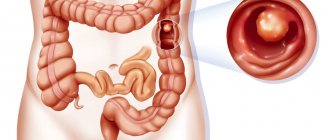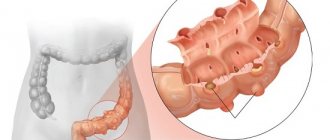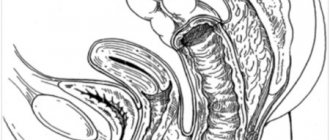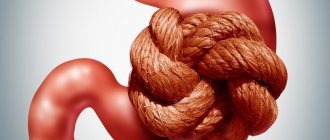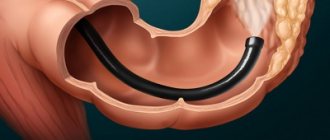Relatively recently, in medical circles there was a statement that the human body, emotions, mood, health and actions are ruled by... bacteria! Their habitat is the intestines. The public was instantly divided into 2 camps. Some argue that bacteria really have the ability to control us, and substantiate their opinion with facts, others recognize this as complete unscientific nonsense and, paradoxically, also give arguments. Let's try to figure it out and understand what microflora is, why it is needed, how bacteria control us, why they are called the second brain, and how to help bacteria make control effective.
What is intestinal microflora
Intestinal flora is what a person receives from the moment of birth and develops during the first 7-10 years. Over time, the set of microorganisms becomes more diverse and consists of lactobacilli, bifidobacteria, fungi and E. coli. They all live in friendly neighborhood not only with each other, but also with pathogenic microflora, preventing it from multiplying and causing harm to the body.
It is believed that pathogenic microflora makes up no more than 15% of the total mass of bacteria. In total, scientific minds count about 100 trillion simple microorganisms in our intestines, weighing on average 1.5 kilograms.
Normally, through nutrition and lifestyle, a person is able to maintain a successful symbiosis of his settlers for a long time. Understanding this process will help significantly improve your quality of life and health.
What is the intestinal microflora responsible for?
Digestion
One of the most important functions of intestinal bacteria is participation in the process of food digestion. This is such a gigantic plant for clearing the wheat from the chaff. When all incoming food, proteins, fats and carbohydrates are broken down under the influence of enzymes, the work of which is activated by the intestines. The intestines are the final, but most labor-intensive and time-consuming part of the digestion process. It is there that, with the help of the microbiome, the process of sorting useful substances from unnecessary garbage begins. The quality of food sorting and the amount of nutrients that are absorbed and assimilated in the intestines depend on how healthy the intestines and the entire digestive tract are.
Protection
One in the field is not a warrior - a phrase that successfully characterizes the work of the intestines. The fewer “good” bacteria there are, the more space there is for the “bad” ones. Beneficial bacteria in the process of vital activity suppress the growth of pathogens of infectious diseases, thereby supporting the protective functions of the entire body.
Immunity
When the body's defenses are strong, the disease will not go away. And immunity, whose homeland is the intestines, plays a big role in this. How does this happen? Intestinal bacteria stimulate the synthesis of immunoglobulins - special proteins that increase the body's defenses against dangerous infections. Immunoglobulins inhabit the intestinal walls, and in sufficient quantities pathogenic microorganisms do not penetrate. Beneficial bacteria also contribute to the maturation of the system of phagocytic cells (nonspecific immunity), capable of absorbing and destroying pathogenic microbes.
Vitamin synthesis
Friendly bacteria living in the intestines are vital for humans to synthesize, store and supply vitamins to the body:
- Vitamin B-12
- Folic Acid/Vitamin B-9
- Vitamin K
- Riboflavin / Vitamin B-2
- Biotin / Vitamin B-7
- Nicotinic acid / Vitamin B-3
- Pantothenic Acid/Vitamin B-5
- Pyridoxine / Vitamin B-6
- Thiamine/Vitamin B-1
Among them are those that are not produced anywhere else in the body. This mission is assigned to bacteria. B vitamins are vital for humans. They keep the nervous system in order, participate in metabolic processes, and help resist stress and depression. If the microflora is disturbed, vitamin synthesis does not occur properly and unpleasant consequences cannot be avoided. In addition, no course of vitamins will help. You will not feel the positive effect simply because they will not be absorbed in the intestines.
The role of the gut microbiota in maintaining health
Microflora is a metabolically active and complex ecosystem consisting of hundreds of thousands of microorganisms - bacteria, viruses and some eukaryotes. Like an invisible stocking, biofilm covers all the mucous membranes of our body and skin. Microbiota unites more than 1014 (one hundred billion) microbial cells, which is 10 times the number of cells of the body itself. The microbiota is in friendly relations with the human body: the host body provides habitat and nutrients, microorganisms protect the body from pathogenic pathogens, and contribute to the maintenance of normal immunological, metabolic and motor functions. There are several important biotopes that differ in the distribution density of microorganisms and composition: skin, mucous membranes of the gastrointestinal tract, respiratory tract, urogenital tract, etc. The intestinal microbiota is considered the most numerous, accounting for 60% of microorganisms that colonize the human body. The intestinal microflora consists of a group of microorganisms represented by more than 1000 species, 99% of which are accounted for by 30–40 major species. In scientific circles, the intestinal microflora is also called an accessory organ. The state of the intestinal microbiota determines the quality and duration of life. Each person has his own individual pattern of microbiota distribution and composition. It is determined in part by the genotype of the host and the initial colonization that occurs immediately after birth. Various factors such as type of delivery, breastfeeding, lifestyle, dietary preferences, hygiene and environmental conditions, antibiotic use and vaccination may determine the final changes in microbiota structure.
When the composition or function of the microbiota changes, dysbiosis develops. Dysbiotic conditions alter intestinal motility and permeability, and also distort the immune response, thereby creating the preconditions for the development of a proinflammatory state. Such changes, especially in the host's immune and metabolic functions, can cause or contribute to a number of diseases, such as diabetes mellitus, obesity, neurological and autoimmune diseases. Recent studies have shown that the microbiota is involved in the etiopathogenesis of many gastroenterological diseases, such as irritable bowel syndrome, inflammatory bowel disease, celiac disease, non-alcoholic steatohepatitis and gastrointestinal neoplasms.
Intestinal microflora and immunity
The intestinal microbiota is critical for the development of lymphoid tissues and for the maintenance and regulation of intestinal immunity.
In the intestine, sensitization of immunocytes occurs, which then populate other mucous membranes and circulate between various organs. This mechanism ensures the formation of lymphocyte clones and the formation of specific antibodies in areas of the mucous membrane distant from the site of primary sensitization.
The immunocompetent tissues of the digestive tract are combined into lymphoid tissue. Lymphoid tissue is represented by lymphocytes located between the intestinal epithelial cells, lymphocytes of the own layer, Peyer's patches (clumps of lymphoid tissue in the small intestine) and lymphoid follicles.
Antigens that enter the intestinal lumen or mucous membranes are recognized by memory immunoglobulins (IgG), after which the information is transmitted to the immunocompetent cells of the mucous membrane, where plasma cells responsible for the synthesis of IgA and IgM are cloned from sensitized lymphocytes. As a result of the protective activity of these immunoglobulins, the mechanisms of immunoreactivity or immunotolerance are activated. Thanks to the induction of immunological tolerance in the intestine, unwanted inflammatory reactions against intestinal microbiota and dietary proteins do not occur. Gut microbiota and metabolism
The intestinal microbiota directly contributes to the metabolism of nutrients and vitamins necessary for the functioning of the host organism, while extracting energy from food. This energy is generated by the fermentation reaction of indigestible carbohydrates (fiber), which results in the formation of short-chain fatty acids, hydrogen and carbon dioxide.
Short-chain fatty acids ensure the functioning of colonocytes.
Short-chain fatty acids are considered subtle regulators of immunity, energy metabolism and adipose tissue metabolism. For example, short-chain fatty acids are involved in the interaction between bacteria and the immune system, suppressing signals that can lead to the development of autoimmune reactions. Propionic and butyric fatty acids have a positive effect on glucose metabolism. Finally, short-chain fatty acids provide acidification of the colon lumen, preventing the growth of bacterial pathogens.
The intestinal microbiota is directly involved in the metabolism of bile acids, the source of which is cholesterol. In the liver, primary bile acids - cholic and chenodeoxycholic acids - are synthesized from cholesterol, which enter the intestines. Bacteroides and lactobacilli further convert primary bile acids into secondary bile acids - deoxycholic and lithocholic. A change in the normal balance of intestinal bacteria leads to inadequate synthesis of bile acids.
Microbiota and nervous system
Even more surprising data on the relationship between the intestinal microbiota and the nervous system. The intestinal microbiota communicates closely with the central nervous system. The intestinal microbiota produces neuroactive molecules such as acetylcholine and serotonin, dopamine, which are the main mediators of signals in the central nervous system and also regulate brain function through the activation of immune signaling pathways. Additionally, the vagus nerve is actively involved in bidirectional interactions between the gut microbiota and the brain to maintain homeostasis in both the brain and the gut.
Recent studies have shown that the microbiome influences the properties and function of microglia. Microglia protect the brain from various pathological conditions through activation of the immune response, phagocytosis, and production of cytokines. In addition, microglia are responsible for the formation of neural circuits that are involved in brain development. Various dysbiotic conditions, including those caused by taking antibiotics, lead to inhibition of the maturation of microglial cells. Immature microglia lead to impaired immune activation.
Astrocytes
are the largest cell population in the CNS, and they outnumber neurons by almost five times. Like microglia, astrocytes perform several important functions in maintaining the integrity of the central nervous system, including controlling blood circulation in the brain and maintaining the stability of the blood-brain barrier. Astrocytes regulate ion balance and influence signal transmission between neurons. Excessive activation of astrocytes is a trigger in the development of central nervous system dysfunction and neurological disorders. Excessive activation occurs under the influence of microflora metabolites.
The integrity of the blood-brain barrier is also regulated by microbiota metabolites, which mediate the transmission of more microbial signals between the gut-brain axis.
Dysbiosis of microbial species in the intestine can cause atypical immune signals, imbalances in host homeostasis, and lead to the progression of CNS diseases. For example, the role of microbiota in the pathogenesis of multiple sclerosis, a disease characterized by demyelination of nerve cell axons, is considered. In Parkinson's disease, which causes motor symptoms including tremors, muscle rigidity, slowness of movement, and gait abnormality, there is an accumulation of α-synuclein in neurons. Excessive deposition of α-synuclein in the nervous system is initiated by the intestinal microflora before symptoms of central nervous system damage occur, which is associated with some specific digestive symptoms (constipation and impaired colonic motility). Gut bacterial composition influences Parkinson's disease: the severity of symptoms, including postural instability and gait disturbance, is associated with changes in the abundance of some Enterobacteriaceae species, and decreased abundance of Lachnospiraceae leads to greater worsening of motor and non-motor symptoms in patients with Parkinson's disease. Alzheimer's disease is another neurodegenerative disease that leads to serious impairments in central nervous system function - learning, memory and behavioral reactions. Alzheimer's disease is characterized by the deposition of amyloid-β (Aβ) peptide on and around neurons, together with the accumulation of tau protein within cortical neurons. Amyloid overload and tau aggregation impair synaptic transmission. Changes in the composition and diversity of the microbiota make a certain contribution to the pathogenesis of Alzheimer's disease. Activated microglia contribute to disease progression by increasing amyloid deposition.
Obesity and microbiota composition
In obesity and diabetes mellitus, changes are observed in the composition of the intestinal microbiota, in particular, a decrease in the population level of saccharolytic bacteroids that affect the intensity of metabolic processes, as well as an increase in the proportion of bacteria of the Firmicutes class (Esherichia coli, Clostridium coccoides, Clostridium leptum). A decrease in the content of saccharolytic bacteria reduces the production of short-chain fatty acids, which ensure trophism and division of the intestinal epithelium, its maturation, have an antimicrobial effect and a regulatory effect in relation to ions and lipids.
Additionally, with obesity, chronic systemic inflammation is observed, accompanied by the secretion of proinflammatory cytokines (interleukins - IL, C-reactive protein, tumor necrosis factor α - TNF α, etc.) in visceral adipose tissue. Disturbances in the composition of the intestinal microflora lead to an increase in the effect of systemic inflammation due to an increase in the concentration of bacterial lipopolysaccharides, which stimulate the production of pro-inflammatory components.
Diagnosis of the state of intestinal microbiota
There are two methods for determining microbiota - a standard analysis for dysbiosis and assessing the composition of the microbiota using blood mass spectrometry (GC-MS). The mass spectrometry technique is based on determining the presence of microorganisms by their cellular components (higher fatty acids, aldehydes, alcohols and sterols). The technique was developed by Professor G.A. Osipov. The GC-MS method allows you to simultaneously measure more than a hundred microbial markers directly in a sample, allowing you to make a conclusion about uncultivable and difficult-to-cultivate pathological pathogens. The method is also universal for fungi and viruses.
How intestinal microflora helps you lose weight
Another focus of attention of scientists and researchers is the dependence of a person’s weight on the diversity of microflora. Thus, recent research by American scientists has confirmed this fact. In the experiment, sets of gut bacteria from human twins were placed into the intestines of germ-free mice. In one set the twins were thin, in the other they were obese. Microbes taken from thin twins caused weight loss in mice, and bacteria from overweight twins caused obesity in mice. But after a while, when the mice were put in the same cage, the obese mice began to rapidly lose weight.
Scientists have made the assumption that microflora
is able to control eating habits, requiring a person to provide certain foods that will promote the growth of either pathogenic or “lean” bacteria. The best diet for some bacteria is fat and they constantly require it again and again, while others need sugar. It is on the dependence of nutritional needs and the diversity of bacteria in the intestines that scientists have put forward the theory that intestinal settlers seek to take over humans and manipulate the chemical composition of the environment for their own purposes and benefit. This, in turn, may mean manipulating our behavior (we get nervous if we don’t eat sweets) by influencing hunger centers with the help of nerve impulses, the desire to eat this or that product, for certain foods, or a feeling of disgust from certain foods .
Structure of the human intestine
The concept of “intestine” combines two functionally different sections of the entire digestive system: the small and large intestines. Based on the name, it is not difficult to guess that the difference between the two sections is precisely the size of the intestinal lumen.
In turn, the small intestine has three sections. The first, located immediately after the stomach, is the duodenum. Its name is directly related to its size - its length is about 12 fingers. After it is the jejunum. Its diameter is slightly smaller than that of the first section. It lies in the peritoneum in loops. This section of the intestine is up to 2 meters in length. The small intestine ends with the ileum. The small intestine has smooth muscle throughout its entire length.
Its inner surface is lined with villi, which are responsible for the complete absorption of nutrients from the food bolus. It is in the small intestine that the processes of assimilation of food components take place, saturating the circulatory system with vitamins, minerals and other substances important for health. Enzymes released into the lumen of the duodenum from the pancreas and liver are responsible for the processing of food. In the following sections of the small intestine, broken down fats and proteins are processed by microorganisms that inhabit the inner surface of the hollow organ. These are mainly from the families of lactobacteria and bifidobacteria.
The large intestine is separated from the small intestine by a sphincter, which will not allow the food bolus to reverse. This department is responsible for the absorption of liquid from incoming products and the formation of feces from fibers and food fragments that the body does not need. It is in the large intestine that there is a section called the cecum, which has a process in the form of a conditional “dead end”. This dead-end branch was called the appendix.
The entire large intestine wraps around the small intestine along the edge of the abdominal cavity. Due to their location, they are divided into: ascending, transverse and descending colon. The large intestine ends with the rectum. It has a sphincter at the end called the anal ring.
Why is the balance of microflora disturbed?
This balance is very fragile and is easily subject to external influence. And this happens for several reasons:
- taking antibiotics
- eating disorder
- sugar and alcohol abuse
- poisoning
- taking certain hormonal medications
- diseases of the digestive system
- stress
- taking certain medications - non-steroidal anti-inflammatory drugs.
Signs of microflora disturbance
- Abnormal bowel movements - constipation, diarrhea, irregular bowel movements, bloating, colic, pain
- Disorders of the gastrointestinal tract - the appearance of heaviness, heartburn, belching, weight gain.
- Dehydration - the appearance of brittle and dry hair, nails, skin,
- Intoxication of the body - nausea, painful complexion, pimples and acne.
- The presence of an unpleasant odor when breathing, an unpleasant odor of feces
- Changes in the nervous system - fatigue, drowsiness, lack of mood, decreased performance.
- Dizziness and headaches
Symptoms of irritable bowel syndrome
- nausea and gag reflex;
- flatulence with copious release of gases;
- abdominal pain or cramps;
- constant bloating;
- stool disorders - constipation or diarrhea;
- pain in the lower abdomen;
- sleep disturbance;
- increased heart rate;
- increased fatigue;
- long digestion of food;
- the appearance of mucus in the stool;
- false urge to defecate;
- loss of appetite.
Also, the disease is often accompanied by symptoms that, at first glance, are not characteristic of intestinal pathologies: headaches, discomfort in the spine and muscles, weight loss and abdominal swelling. All these symptoms are not constant, they can disappear and reappear over time. Unpleasant sensations most often appear after each meal, and then become less pronounced.
How to restore intestinal microflora
The process of microflora restoration is not fast. It is important not only to adjust the diet, but also to actively help the body “build up” the microbiome - to choose the right drug containing pre- and probiotics.
Linex Probiologist Probifid RioFlora Immuno
Hilak Forte
Duphalac
Maxilac
Lactobalance
Bion-3
Diagnosis of irritable bowel syndrome
If you have all the symptoms of the disease listed above, consult a physician. He will conduct an initial examination and refer you to a gastroenterologist. The purpose of primary diagnosis is to exclude the presence of other life-threatening diseases: tumors, inflammatory processes, growths, infectious diseases.
When visiting a doctor, you need to provide a complete medical history, report the presence and frequency of symptoms, and talk about the presence of chronic diseases. After examination and palpation (feeling), the specialist will refer you for laboratory tests, including:
- General blood analysis. The analysis allows you to determine whether an inflammatory process is present in the body, as well as to determine possible anemia.
- General urine analysis. Determines the presence or absence of blood and parasites in the patient’s body, which allows us to talk about the development of a number of intestinal diseases other than irritable bowel syndrome.
- Blood test for celiac disease. A specific blood test that allows you to identify a disease of the digestive system (celiac disease), in which the intestines cease to properly digest incoming food, which is accompanied by diarrhea.
- Colonoscopy. This is an examination of the colon from the inside using a special device (colonoscope).
- Magnetic resonance imaging of the pelvis and abdomen. This is a non-invasive examination method that allows you to study the structure and condition of the organs and tissue of the pelvis in men and women using magnetic waves.
After all the studies have been carried out and all other intestinal diseases have been excluded, the doctor begins treatment and prescribes complex therapy, based on the patient’s medical history.
Bonus: Can Microbes Control Human Behavior?
This hypothesis is now becoming very popular and, indeed, has a number of direct and indirect reasons. The intestine is called the second brain of a person and the bacteria living in it are truly capable of controlling a person at the level of the nervous system.
At the moment, humanity knows a lot about our body, but not everything. Research in the field of intestinal microflora and its effect on the health and quality of the body is in its infancy, but is attracting more and more attention from the scientific world. Thus, in the course of studying the human microbiome, the existence of a strong relationship between the state of bacteria and the functioning of the immune, nervous and endocrine systems was confirmed. Some scientists believe that bacteria may release certain signaling molecules that influence the activity of the decimal cranial nerve, which runs from the gut to the brain, or the vagus nerve may be involved in this process.
It is impossible to say how long it will take to fully understand a person, but you can be sure that we have come to extremely important discoveries that, in the future, will solve many health problems, help find the key to incurable diseases and completely change everyday life. Be healthy!
Reasons for the development of the pathological phenomenon
- Nutrition. Eating fried, salty, sweet and fatty foods, as well as alcohol-containing drinks, has a negative effect on digestion. In addition, modern people constantly snack on the run. Which also negatively affects intestinal function.
- Hormonal disbalance. More often, this reason is typical for women during periods of life such as pregnancy, breastfeeding, menopause, and the menstrual cycle. As for the menstrual cycle, during this period the amount of chemicals changes, and the problem begins to manifest itself more clearly.
- Impaired intestinal motility. If motor skills work in an accelerated mode, this leads to stomach upset and diarrhea. On the contrary, slow bowel movements can cause constipation. As a result, pain leads to a sharp contraction of muscles.
- Emotional stress: stress, depression, anxiety, fatigue.
- Past diseases of the gastrointestinal tract. Infections that cause gastrointestinal diseases can subsequently affect the functioning of the entire intestine.
Treatment of irritable bowel syndrome
Therapy for IBS should be carried out comprehensively in several stages. The treatment regimen depends on the individual characteristics of the body, the degree and time of the pathology. Most often, drug therapy is prescribed, which is supplemented by a special diet. In the absence of comprehensive treatment, symptoms will reappear from time to time.
The medications that the doctor prescribes for the treatment of IBS not only eliminate painful symptoms, but also improve the condition of the digestive system, and also prevent relapses and complications. When treating diarrhea syndrome, medications with antimicrobial properties are prescribed. They relieve irritation of intestinal tissues, stop excess flatulence and restore normal intestinal function.
When treating IBS with constipation, the use of natural medicines is indicated that eliminate difficulties with defecation, have a gentle effect on inflamed intestinal tissue and free it from feces. May be in the form of chewable tablets or rectal suppositories.
If the appearance of IBS is associated with neurological disorders, antidepressants are prescribed - they normalize the functioning of the nervous system and improve the psycho-emotional state.
To relieve pain, painkillers and antispasmodics are used - they relax muscle fibers and tissues that are in hypertonicity.
Diet for irritable bowel syndrome
The diet for IBS depends on what symptoms accompany the pathology. If you experience frequent constipation, you should exclude dry, salty foods from your diet. For diarrhea, avoid liquid foods, vegetables, and fruits.
If you suffer from flatulence, you should limit dairy products, nuts, and beans. If there is severe pain in the intestines, fatty, salty, and heavy foods are not allowed.
At the Medunion clinic you can undergo a full examination and treatment of irritable bowel syndrome. We employ practicing doctors with over 10 years of experience. In the diagnostic room you can take all tests and undergo hardware examination in a comfortable environment. For our clients there is a special offer “doctor at home”. If you are unable to visit our medical center yourself, a doctor will come to you and conduct an examination at home.
Take care of your health and make an appointment with a multidisciplinary medical center directly on our website.
